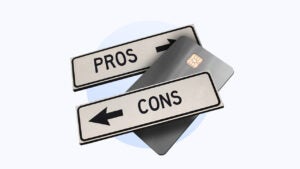How Gen Z consumers are using their credit cards




When it comes to paying with plastic, comfort levels vary from generation to generation. Our latest data, compiled in Bankrate’s December 2021 credit card features survey, found 55 percent of people between 18 and 29 years old had at least one credit card. That went to 73 percent for people 30 to 49 years old, 78 percent for those aged 50 to 64 and 89 percent of those 65 and up.
Out of all of the generations, Gen Z (often classified as born between 1997 and 2012) tends to be less inclined to hop on the credit card bandwagon. There are a few factors contributing to this. Among them are lack of access to credit, fear of falling into a debt spiral and a rise in popularity of “buy now, pay later” alternatives.
On the opposite end of the spectrum, older consumers tend to have longer credit histories and more access to a wider range of credit cards, making them more comfortable owning and using credit cards.
Gen Z’s relationship with credit cards
With so many alternatives to traditional credit cards, many Gen Zers have put off adding a credit card to their wallet, and are more likely to use debit cards to cover their purchases. Another popular alternative is “buy now, pay later” (BNPL). Think of BNPL as an installment loan. It gives younger consumers the opportunity to spread out large payments over time and avoid falling down a debt spiral by only using BNPL where it’s accepted and only for certain purchases.
While Gen Z tends to have a reputation for being debt-averse, some studies show this group isn’t necessarily anti-credit card. But they are more careful than older generations about how often they use them. According to Experian’s State of Credit report, Gen Z consumers have increased the number of credit cards they carry and have an overall credit card debt balance of $2,197 — compared to Gen X cardholders who carry an average credit card balance of $7,718.
How Gen Z compares to older generations
A few key generational differences have contributed to this shift in credit habits between older and younger generations. The Credit Card Accountability Responsibility and Disclosure Act (known as the Credit CARD Act) of 2009 made it more challenging for consumers under 21 to get a credit card without first meeting certain income requirements or securing a cosigner.
It also prevented credit card companies from marketing their products on college campuses. This change led to a delay in first-time credit card ownership for Gen Zers who, unlike previous generations, haven’t been targeted for credit products at a younger age and have faced additional barriers when it comes to accessing new credit.
Additionally, a survey by MagnifyMoney found that 67 percent of Gen Zers rely on their parents for financial assistance—that’s more than any other generation. This could make them less inclined to take on consumer debt without a reliable source of income to help them pay their balance off.
Even for older Gen Zers who have entered the workforce, rising inflation has made it more difficult to save and pay down debt compared to older consumers who tend to earn higher salaries and have more money in their savings accounts.
What drives Gen Z’s financial decisions
Studies show Gen Zers are the least financially literate of all generations. Additionally, many Gen Zers are wary of making risky financial moves after watching their parents navigate the Great Recession and millennials struggle to pay down student debt and secure jobs in the aftermath.
In fact, Gen Zers cite money concerns as a major stressor. Mounting student loan debt, economic fallout from the pandemic and rising inflation are a few factors weighing on younger Americans today. Experts say money and personal finances will continue to be a significant source of stress for many Americans until the economy begins to move in a positive direction, post-pandemic.
Financial resources for Gen Z
Despite not being as well-versed in personal finance, Gen Z Americans have many options for boosting their financial literacy. For many Gen Zers who were born into the digital age, the answer to most of their financial questions is at their fingertips. There are a number of personal finance books, “finfluencers,” podcasts and government resources that can help them improve their overall financial literacy and help them take charge of their finances.
Growing that knowledge and learning to properly manage their money and build a positive credit history is a key step in hitting major financial milestones like purchasing a vehicle, becoming a homeowner or taking out a business loan. Creating a simple budget using a strategy like the 50/20/30 method or the envelope method can help consumers avoid overspending, and keep them accountable to their savings goals and recurring payments each month.
These responsible money habits pay off in the long run, demonstrating to larger financial institutions that they’re capable of managing their finances and can be a trusted borrower in the future when applying for a new credit card or a loan.
The bottom line
Credit card ownership and spending habits vary from generation to generation as a result of several external, economic factors that can influence consumers and how comfortable they are owning and using credit cards. For many Gen Zers, credit cards are seen as a valuable tool, but must be managed responsibly and used sparingly.




